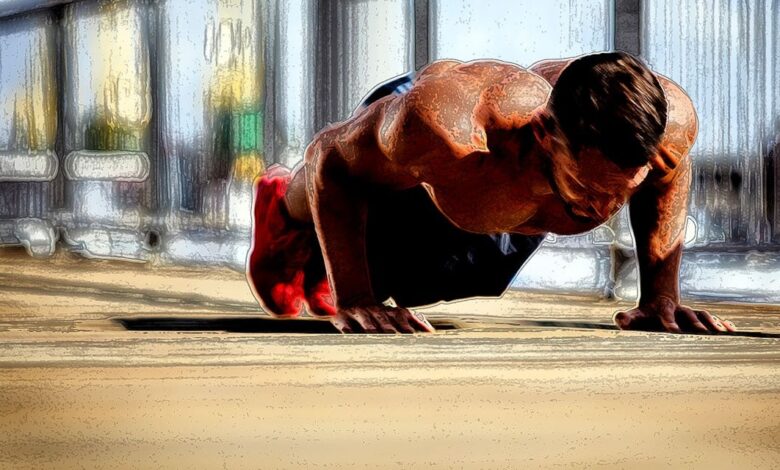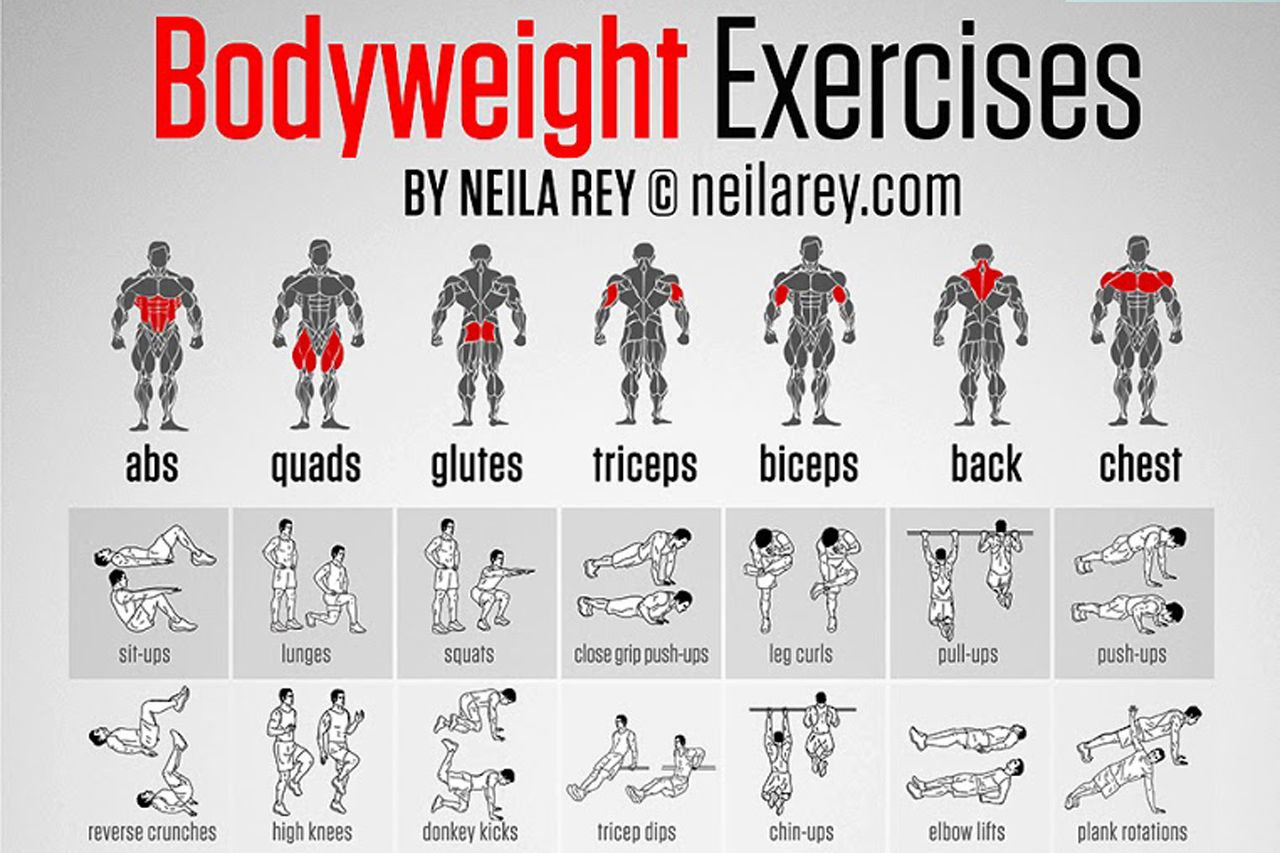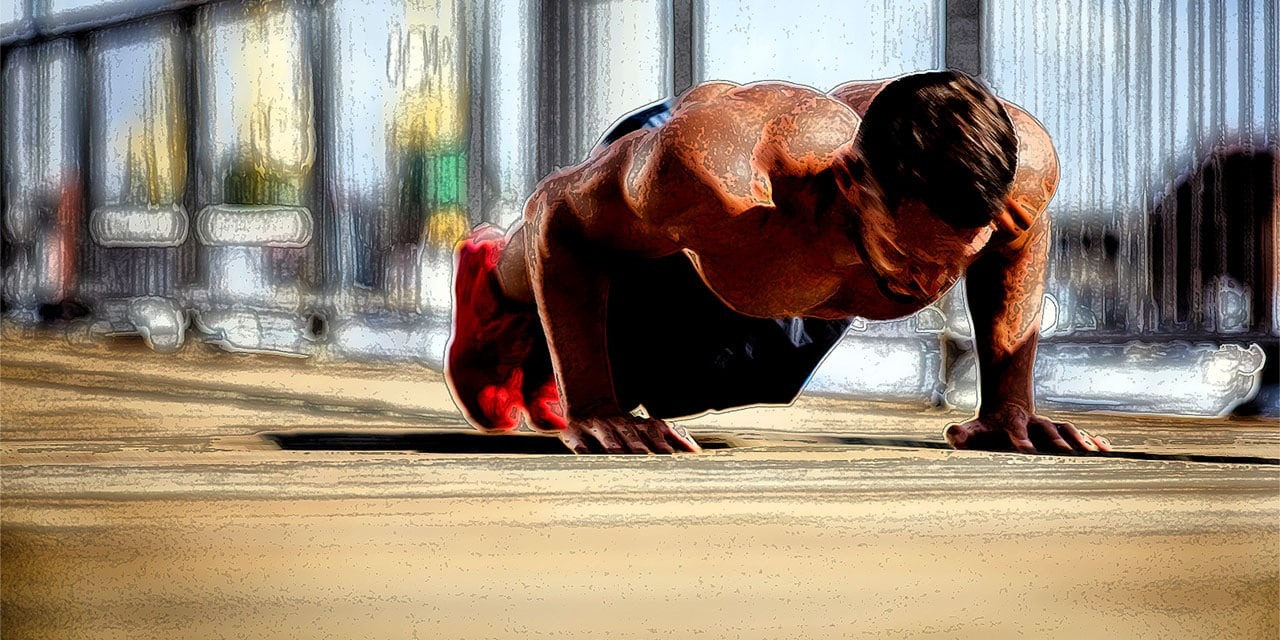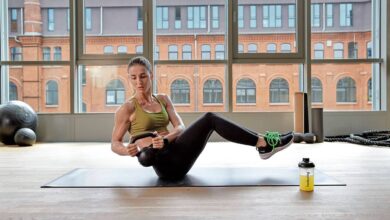
Ways To Make Bodyweight Exercises Harder
Ways to make bodyweight exercises harder are endless! It’s easy to get stuck in a rut with your workout routine, but adding a little challenge can make a big difference. Whether you’re looking to build more muscle, increase your strength, or simply shake things up, there are plenty of ways to take your bodyweight exercises to the next level.
From adding external resistance to incorporating advanced techniques, we’ll explore various methods to push your limits and unlock new levels of fitness.
This guide will cover everything from the fundamentals of increasing resistance to advanced techniques like plyometrics and tempo training. We’ll also delve into the importance of muscle activation and progressive overload, providing practical strategies and sample workouts to help you maximize your results.
So, get ready to challenge yourself and unlock your full potential with these effective ways to make bodyweight exercises harder!
Increasing Resistance

Making bodyweight exercises harder can be achieved through various methods, including increasing resistance. This involves making the exercise more challenging by adding external forces or changing the body’s position. Here are some strategies to consider:
Using External Weights
Adding external weights is a straightforward way to increase the resistance in bodyweight exercises. This can be done using various tools:
- Weighted vests:These vests distribute weight evenly across the body, making exercises like squats, lunges, and push-ups more challenging. The added weight increases the overall resistance, requiring more effort from the muscles.
- Dumbbells:Holding dumbbells during exercises like squats, lunges, or rows increases the resistance by adding weight to the limbs. This forces the muscles to work harder to control the movement.
- Resistance bands:Resistance bands provide variable resistance, making them versatile for various exercises. They can be used to increase the difficulty of squats, lunges, push-ups, and rows by adding resistance throughout the range of motion.
Changing Body Positioning
Altering body positioning can significantly increase the difficulty of bodyweight exercises. This involves manipulating the body’s leverage and stability:
- Elevated feet:Elevating the feet during push-ups or squats increases the range of motion and the amount of weight the body needs to support, making the exercise more challenging.
- Single-leg exercises:Performing exercises like squats, lunges, or calf raises on one leg increases the load on the working leg, enhancing the challenge and improving balance and coordination.
- Uneven surfaces:Performing exercises on unstable surfaces like a balance board or a Bosu ball increases the difficulty by requiring more muscle activation to maintain stability and control.
Incorporating Unstable Surfaces
Unstable surfaces add an element of instability to bodyweight exercises, forcing the muscles to work harder to maintain balance and control. This can be achieved by:
- Balance board:A balance board provides a dynamic surface, requiring the muscles to constantly adjust to maintain balance during exercises like squats, lunges, and planks.
- Bosu ball:The rounded surface of a Bosu ball challenges balance and coordination, making exercises like push-ups, squats, and lunges more demanding.
- Swiss ball:Similar to a Bosu ball, a Swiss ball offers an unstable surface that increases the difficulty of exercises like planks, push-ups, and sit-ups.
Modifying Exercises to Increase Range of Motion
Increasing the range of motion in bodyweight exercises can enhance the challenge and target more muscle fibers. This can be done by:
- Deep squats:Squatting below parallel increases the range of motion, demanding more effort from the leg muscles.
- Full push-ups:Lowering the chest to the ground in push-ups increases the range of motion, requiring greater strength and endurance.
- Overhead press:Performing an overhead press with a full range of motion, raising the weight above the head, engages more muscles and increases the challenge.
Enhancing Muscle Activation
Maximizing muscle activation during bodyweight exercises is crucial for optimizing strength gains, muscle hypertrophy, and injury prevention. By focusing on the mind-muscle connection and employing specific techniques, you can ensure your muscles are working effectively, leading to better results and a more fulfilling workout experience.
Mind-Muscle Connection, Ways to make bodyweight exercises harder
Developing a strong mind-muscle connection involves consciously focusing on the targeted muscle group during each repetition. This heightened awareness allows for greater control and engagement of the muscle fibers, leading to improved activation and strength gains.
- Visualize the Muscle:Before starting an exercise, take a moment to visualize the targeted muscle group contracting and extending. This mental imagery helps establish a clear connection between your mind and the muscle.
- Focus on the Sensation:Pay close attention to the feeling of the muscle contracting and stretching throughout the exercise. This sensory feedback helps you understand how your body is moving and refine your technique for optimal activation.
- Slow Down the Movement:By performing exercises at a slower pace, you allow for greater control and focus on the muscle contraction. This deliberate movement encourages a more conscious engagement of the targeted muscle group.
Maximizing Muscle Engagement
To maximize muscle engagement during bodyweight exercises, incorporating specific techniques can significantly enhance your results. These techniques focus on maximizing muscle activation through various approaches.
Want to make your bodyweight workouts more challenging? One great way is to increase the time you hold a challenging position, like a plank or a wall sit. You can also add repetitions or sets to your routine. But to really see results, you need to track your progress.
Check out this article on 3 ways to use tracked data to meet your goals to learn how to leverage data to achieve your fitness goals. Once you understand how to track your progress, you can start incorporating new challenges like adding weights or resistance bands to your bodyweight exercises.
- Tempo Control:Adjusting the speed of your repetitions can influence muscle activation. Slower eccentrics (lowering phase) and faster concentrics (lifting phase) can increase muscle tension and activation.
- Partial Reps:Focusing on the most challenging part of the movement can isolate and target specific muscle groups. For example, in a push-up, focusing on the lower portion of the movement, where the chest muscles are under the most tension, can increase activation in the chest muscles.
- Isometric Holds:Holding a contracted position for a designated period increases muscle tension and activation. Isometric holds can be incorporated into various bodyweight exercises, such as holding a plank or a squat position.
Isometric Holds
Isometric holds involve maintaining a contracted position without any movement. This static contraction creates significant muscle tension, leading to increased muscle activation and strength gains.
Want to make your bodyweight workouts more challenging? Try adding in some resistance bands, or elevating your feet during push-ups. And don’t forget about proper nutrition! Remember to fuel your body effectively, and you’ll be able to push yourself harder.
If you’re trying intermittent fasting, be sure to check out the dos and donts of breaking an intermittent fast to ensure you’re breaking your fast in a way that supports your fitness goals. This will help you avoid feeling sluggish or drained during your workouts, so you can keep making progress!
“Isometric holds are particularly effective for building strength and endurance in specific muscle groups.”
Looking to take your bodyweight workouts to the next level? Try adding in some resistance bands or elevating your feet for a greater challenge. Need a post-workout reward? Head over to Trader Joe’s for a pumpkin-flavored snack, like their delicious pumpkin spice granola – you can find a list of 8 RD approved pumpkin flavored snacks to buy at Trader Joe’s on this blog.
Then, get back to those bodyweight exercises, and remember to listen to your body and adjust your workout as needed.
- Plank:This classic exercise engages the core muscles, including the abdominals, obliques, and lower back. Holding a plank position for an extended period can significantly strengthen these muscles.
- Wall Sit:This isometric exercise targets the quadriceps and glutes. By maintaining a seated position against a wall, you engage these muscles for an extended period, building strength and endurance.
- Handstand Hold:This advanced isometric exercise challenges the entire upper body, including the shoulders, triceps, and core. Holding a handstand position for even a short period requires significant strength and stability.
Exercises for Muscle Activation
Specific exercises target different muscle groups, promoting greater activation and strength development. By incorporating a variety of exercises into your routine, you can ensure a balanced and effective workout.
- Push-Ups:Target the chest, shoulders, and triceps. Variations like incline push-ups, decline push-ups, and diamond push-ups can further target specific muscle groups.
- Pull-Ups:Primarily engage the back muscles, including the latissimus dorsi, biceps, and forearms. Different grip variations, such as wide-grip pull-ups and chin-ups, can target different muscle groups.
- Squats:Primarily target the quadriceps, glutes, and hamstrings. Variations like pistol squats and jump squats can increase muscle activation and challenge your balance.
- Lunges:Target the quadriceps, glutes, and hamstrings. Variations like walking lunges and reverse lunges can engage different muscle groups and improve stability.
Progressive Overload: Ways To Make Bodyweight Exercises Harder

Progressive overload is a fundamental principle in strength training, and it’s equally important for bodyweight exercises. It simply means gradually increasing the challenge of your workouts over time to stimulate muscle growth and improve strength.
Applying Progressive Overload to Bodyweight Training
To apply progressive overload to bodyweight exercises, you need to find ways to make the exercises more difficult as you get stronger. Here are some strategies:
Strategies for Increasing Difficulty
There are numerous ways to increase the difficulty of bodyweight exercises. These strategies can be implemented individually or in combination:
- Increase repetitions:As you get stronger, you can perform more repetitions of each exercise. For example, start with 10 push-ups and gradually increase to 15, 20, and so on.
- Increase sets:You can also increase the number of sets you perform for each exercise. If you start with 2 sets of 10 push-ups, you could gradually increase to 3 sets, then 4 sets, and so on.
- Decrease rest time:Reducing the rest time between sets will increase the overall intensity of your workout.
- Add resistance:You can increase the difficulty of bodyweight exercises by adding external resistance. This can be done with weights, resistance bands, or even a weighted vest.
- Change the exercise variation:Many bodyweight exercises have variations that are more challenging. For example, you can progress from a regular push-up to a decline push-up or a handstand push-up.
Sample Progression Plan for Push-ups
Here’s a sample progression plan for push-ups:
| Week | Exercise | Sets | Reps |
|---|---|---|---|
| 1 | Wall Push-up | 3 | 10-12 |
| 2 | Knee Push-up | 3 | 10-12 |
| 3 | Inclined Push-up | 3 | 10-12 |
| 4 | Regular Push-up | 3 | 10-12 |
| 5 | Decline Push-up | 3 | 10-12 |
| 6 | Diamond Push-up | 3 | 10-12 |
| 7 | Clap Push-up | 3 | 8-10 |
| 8 | Handstand Push-up | 3 | 5-8 |
Bodyweight Exercise Variations with Increasing Difficulty
Here’s a table showing different bodyweight exercise variations with increasing difficulty:
| Exercise | Beginner | Intermediate | Advanced | Elite |
|---|---|---|---|---|
| Squat | Bodyweight Squat | Goblet Squat | Pistol Squat | Single-Leg Squat |
| Pull-up | Assisted Pull-up | Negative Pull-up | Regular Pull-up | Muscle-up |
| Push-up | Wall Push-up | Inclined Push-up | Regular Push-up | Handstand Push-up |
| Plank | Forearm Plank | Regular Plank | Side Plank | Elevated Plank |
Closing Notes
By incorporating these strategies, you can continuously challenge yourself and experience significant progress in your fitness journey. Remember, the key is to listen to your body, gradually increase the difficulty, and stay consistent with your workouts. As you progress, you’ll not only build strength and muscle but also develop a greater sense of accomplishment and confidence in your abilities.
So, embrace the challenge, push your limits, and enjoy the rewarding journey of making bodyweight exercises harder!






